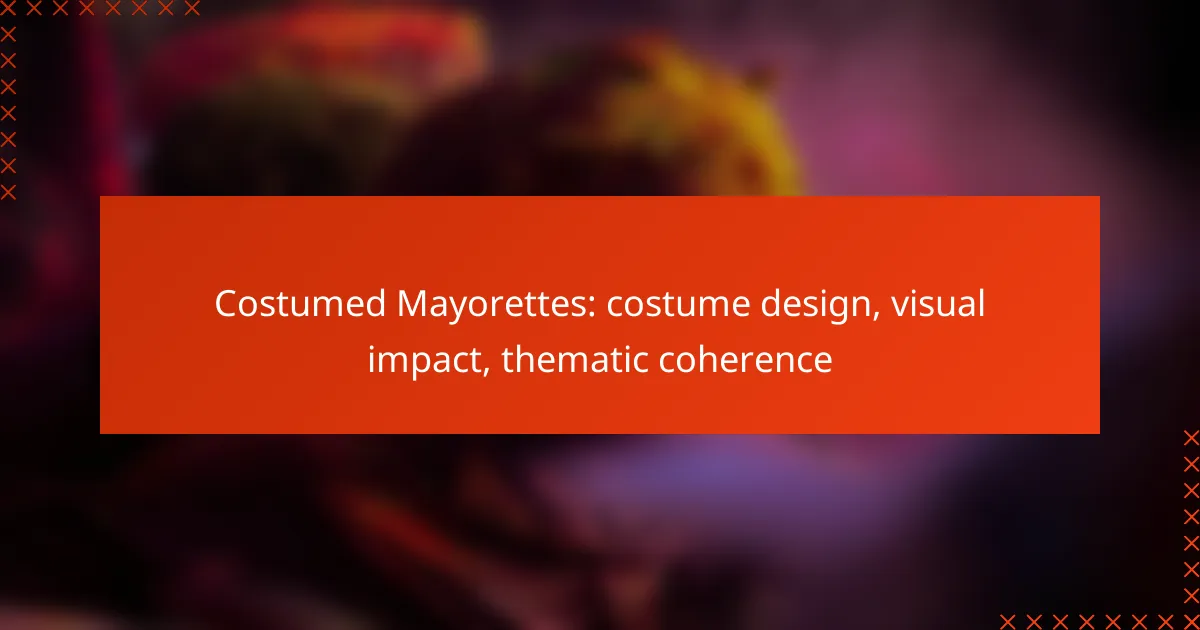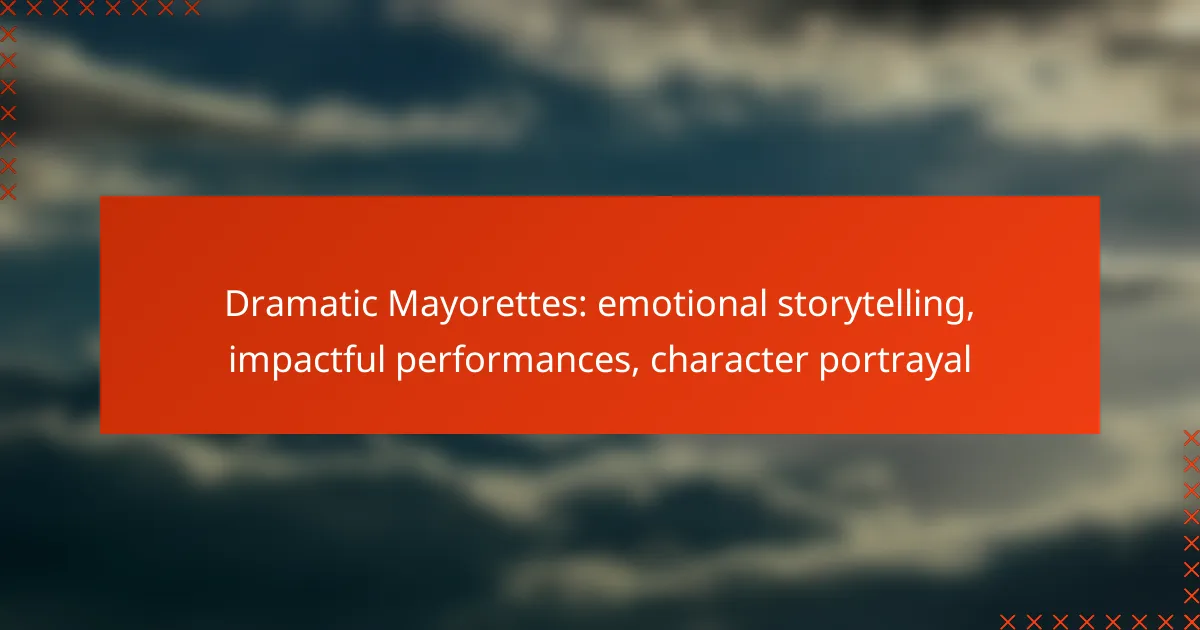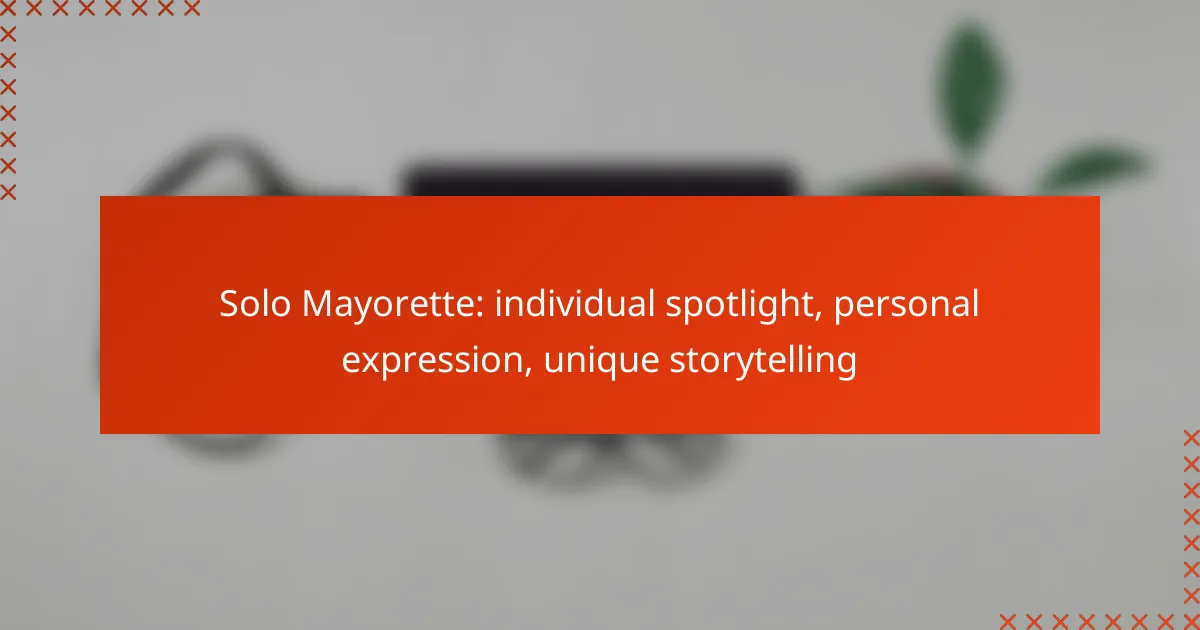Costumed mayorettes play a vital role in parades, with their outfits designed to be visually striking while reflecting cultural themes. The integration of vibrant colors, traditional motifs, and eye-catching accessories enhances their visual impact and ensures thematic coherence with accompanying music and choreography. By focusing on elements like sequins and feathers, these costumes not only captivate audiences but also contribute to a cohesive storytelling experience.

How to design costumed mayorettes for parades in Canada?
Designing costumed mayorettes for parades in Canada involves creating visually striking outfits that reflect cultural themes while ensuring comfort and mobility. Key considerations include color selection, traditional motifs, and the incorporation of accessories to enhance visual impact.
Incorporate vibrant colors
Vibrant colors are essential in costume design for mayorettes, as they attract attention and convey energy. Bright hues like red, blue, and yellow can create a festive atmosphere, making the mayorettes stand out in a parade setting.
When selecting colors, consider the overall theme of the parade and the cultural significance of certain shades. For instance, using green may symbolize nature or renewal, while gold can represent celebration and prosperity.
Utilize traditional motifs
Incorporating traditional motifs into the costumes helps establish a connection to cultural heritage. Patterns, symbols, and designs that reflect local traditions can enhance the thematic coherence of the mayorettes’ appearance.
Examples of traditional motifs include floral patterns, indigenous symbols, or historical imagery relevant to the community. These elements not only beautify the costumes but also tell a story that resonates with the audience.
Focus on comfort and mobility
Comfort and mobility are crucial for mayorettes, as they need to perform various movements during parades. Costumes should be designed with breathable fabrics and flexible cuts to allow for ease of movement.
Considerations such as weight and fit are important; heavy costumes can hinder performance. Aim for lightweight materials that still provide durability, ensuring the mayorettes can engage with the crowd without discomfort.
Include accessories for visual impact
Accessories play a significant role in enhancing the visual impact of mayorettes’ costumes. Items like hats, sashes, and jewelry can add layers of interest and draw attention to the overall design.
When selecting accessories, ensure they complement the costume’s colors and motifs. For example, a vibrant feathered headpiece can elevate a simple outfit, while matching jewelry can create a cohesive look. Balance is key; avoid overcrowding the design with too many accessories.
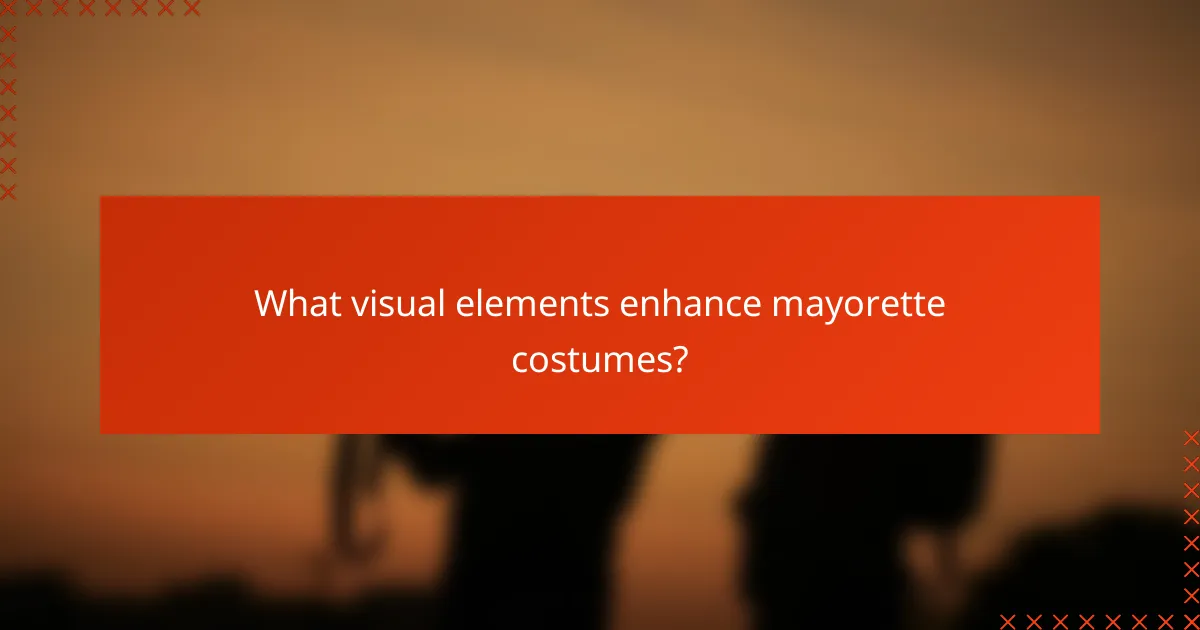
What visual elements enhance mayorette costumes?
Mayorette costumes can be significantly enhanced through the use of striking visual elements that create a memorable impact. Key components include sequins, feathers, and a focus on symmetry, all of which contribute to the overall aesthetic and thematic coherence of the costume.
Use sequins and glitter
Sequins and glitter are essential for adding sparkle and vibrancy to mayorette costumes. These elements catch the light, creating a dazzling effect that draws attention during performances. When selecting sequins, consider using a mix of sizes and colors to achieve depth and visual interest.
It’s advisable to apply sequins in patterns that complement the costume’s design, ensuring they enhance rather than overwhelm. For instance, outlining key features or creating gradients can elevate the overall look.
Incorporate feathers and embellishments
Feathers and embellishments add texture and movement to mayorette costumes, making them visually dynamic. Long feathers can create a dramatic effect, while smaller embellishments can provide intricate details that enhance the costume’s theme. Consider using feathers in a color palette that aligns with the overall design.
When incorporating these elements, balance is crucial. Too many feathers can lead to a cluttered appearance, so aim for a harmonious integration that highlights the costume’s key features without overwhelming them.
Design with symmetry and balance
Symmetry and balance are vital in costume design, as they create a visually appealing and cohesive look. A well-balanced costume ensures that no single element dominates, allowing for a harmonious presentation. Consider using mirrored designs or evenly distributed embellishments to achieve this effect.
Additionally, maintaining symmetry can help in creating a professional appearance, especially during performances. Regularly step back and assess the costume from different angles to ensure that it maintains its visual integrity in motion.

How to achieve thematic coherence in mayorette performances?
Thematic coherence in mayorette performances is achieved by ensuring that costumes, music, and choreography work together harmoniously. This alignment enhances the overall visual impact and storytelling of the performance, making it more engaging for the audience.
Align costumes with music and choreography
Costumes should reflect the style and rhythm of the music and choreography being performed. For instance, if the routine features upbeat, fast-paced music, opt for costumes that allow for freedom of movement and incorporate dynamic elements like flowing fabrics or fringe. Conversely, slower music may call for more elegant and structured designs.
Consider the transitions within the performance as well. Costumes can be designed to change or adapt during key moments, enhancing the storytelling aspect and maintaining the audience’s interest. This could involve removable pieces or color changes that coincide with shifts in the music.
Use a consistent color palette
A consistent color palette is crucial for creating a unified look in mayorette performances. Choose two to four main colors that complement each other and reflect the theme of the performance. This not only strengthens the visual impact but also aids in reinforcing the overall message or emotion you wish to convey.
When selecting colors, consider the cultural significance and psychological effects they may have. For example, vibrant colors like red and yellow can evoke energy and excitement, while blues and greens may convey calmness or elegance. Ensure that all costume elements, from accessories to footwear, adhere to this color scheme.
Incorporate cultural symbols
Incorporating cultural symbols into mayorette costumes can enhance thematic coherence and provide deeper meaning to the performance. Research symbols that resonate with the audience or reflect the cultural background of the routine. This could include traditional patterns, motifs, or colors that hold significance.
When integrating these symbols, ensure they are tastefully executed and do not overwhelm the overall design. Subtle incorporation, such as using a specific pattern in the fabric or a small emblem on accessories, can effectively communicate cultural heritage while maintaining a cohesive look.
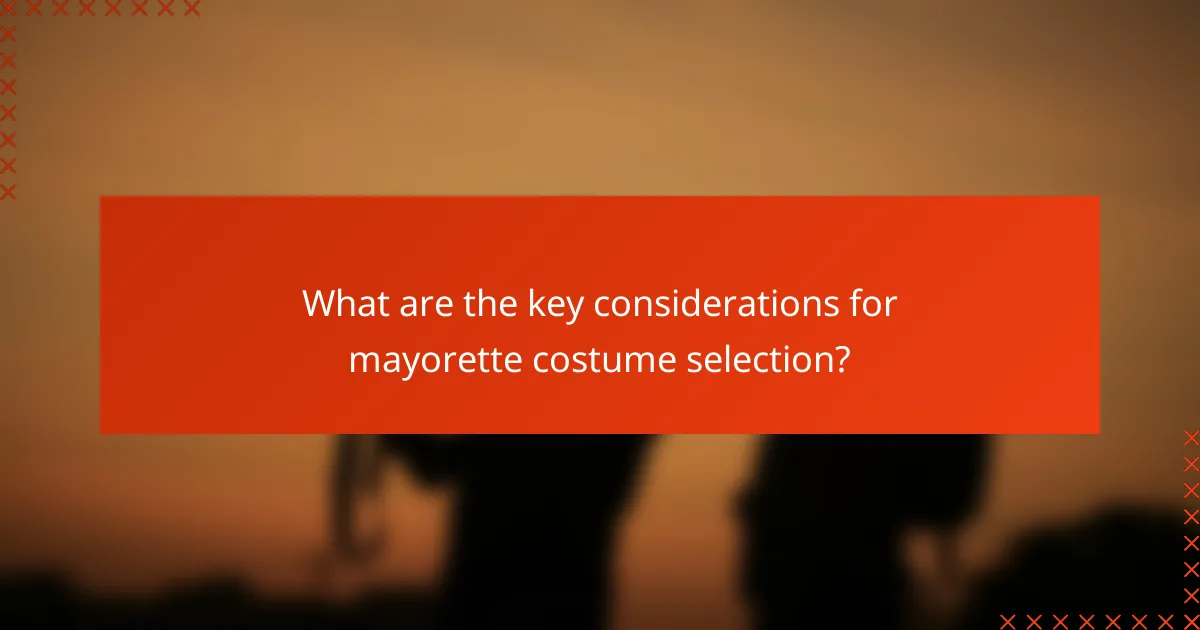
What are the key considerations for mayorette costume selection?
Key considerations for mayorette costume selection include budget constraints, fabric durability, and audience engagement. Each of these factors plays a crucial role in ensuring that the costumes are not only visually appealing but also practical and effective in enhancing the overall performance.
Assess budget constraints
When selecting mayorette costumes, it’s essential to establish a clear budget. Costs can vary significantly based on design complexity, fabric choice, and embellishments. Aim for a budget range that allows for quality materials while accommodating the number of costumes needed.
Consider allocating funds for both the initial purchase and potential maintenance or alterations. A budget breakdown can help prioritize spending on critical elements like fabric and accessories while ensuring the overall design remains intact.
Evaluate fabric durability
Durability is a vital aspect of mayorette costumes, as they must withstand movement and various weather conditions. Choose fabrics that are not only visually appealing but also resilient, such as polyester blends or cotton twill, which offer both comfort and longevity.
It’s advisable to test fabric samples for wear and tear before making a final decision. Look for materials that can endure repeated washing and maintain their color and shape, ensuring the costumes remain vibrant throughout performances.
Consider audience engagement
Costumes should be designed with the audience in mind, as visual impact plays a significant role in engagement. Bright colors and unique designs can capture attention and enhance the overall performance experience. Think about how the costumes will look from a distance and in various lighting conditions.
Incorporate thematic elements that resonate with the audience, such as local culture or event themes. This connection can foster a deeper appreciation and excitement for the performance, making the costumes an integral part of the overall presentation.

How do mayorette costumes impact audience perception?
Mayorette costumes significantly influence audience perception by enhancing visual appeal and conveying cultural significance. The design elements of these costumes can evoke emotions, create excitement, and foster a sense of community during performances.
Enhance visual appeal
Costumes for mayorettes are designed to be eye-catching and vibrant, often featuring bold colors and intricate patterns. This visual appeal captures the attention of the audience, making performances more engaging and memorable.
Incorporating elements like sequins, feathers, and unique accessories can elevate the overall look. For instance, a costume adorned with reflective materials can sparkle under stage lights, creating a dynamic visual effect that enhances the performance.
Convey cultural significance
Mayorette costumes often reflect the cultural heritage of the region they represent, incorporating traditional motifs and styles. This connection to local culture helps the audience appreciate the performance on a deeper level, fostering pride and unity.
For example, costumes may feature specific colors or symbols that are significant to a community, linking the performance to local history or celebrations. Understanding these cultural elements can enhance audience engagement and appreciation for the art form.
